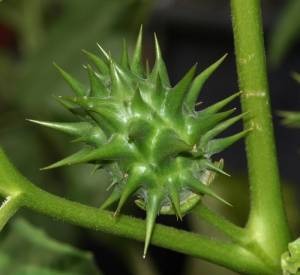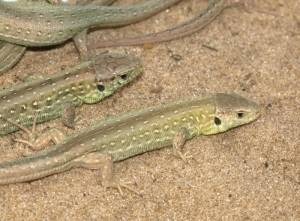Dr Phil Smith’s Wildlife Notes
September 2010
No “Indian Summer” this year, unsettled weather continuing for most of the month and resulting in very few dragonfly records for the Atlas Project. Apart from the occasional Migrant Hawker and the usual Common Darters (in small numbers) I saw hardly any. Similarly affected were late summer butterflies, though a rare sunny day produced two Painted Ladies on a garden Hebe in Spruce Way, Formby, while a large patch of Michaelmas-daisy on Freshfield Dune Heath Nature Reserve was graced by Commas, Red Admirals and a Small Tortoishell. However, despite the inclement conditions, I continued to find Northern Dune Tiger Beetles throughout the month. This has been the best year we have ever known for this iconic rarity. By writing down a GPS grid reference for every sighting, I produced a database of 277 records showing a clear division between the spring and summer generations.
There are still plenty of interesting sand-dune plants to find in September, Patricia Lockwood drawing my attention to a previously unknown colony of Field Gentians in Ainsdale Sandhills Local Nature Reserve south of Discovery Centre. We counted about 1000 plants in a large slack, these being additional to the 140,000 we recorded last year in the adjacent National Nature Reserve. I was also delighted to find about 700 plants of the closely related Autumn Gentian in slacks at the northern end of Birkdale Sandhills. Both these beautiful wild-flowers are sadly declining in the wider countryside but are thriving on the Sefton Coast.
By chance, on 3rd September I was shown a strange, spiky fruit from an unknown plant that had turned up in a garden on Jubilee Road, Formby. Recognising this as an extremely rare Long-spined Thorn-apple (Datura ferox), I arranged to go and see it with friends the following day. A spectacularly large specimen, over five feet tall, the plant has appeared spontaneously, perhaps from bird-seed. Realising that it might be of interest, the garden’s owner did not treat it as a weed but allowed the plant to grow to maturity. This is only the 32nd time that Long-spined Thorn-apple has been recorded in Britain, so several local botanists went to visit it and were duly impressed.

Another of the month’s highlights was the organised release of 34 young Sand Lizards at Freshfield Dune Heath on 5th. Over 40 spectators turned up for this auspicious event, including several children who were enthralled by the baby lizards that had been specially bred in captivity from Sefton stock. This is the start of a three-year project to increase the range of this nationally endangered species on the Sefton Coast.

As a north-westerly gale was raging on 15th, I decided to park on Ainsdale beach for a couple of hours in the hope of seeing some storm-driven seabirds. This proved to be a good move, as I was treated to 20 Leach’s Petrels, some very close, two Manx Shearwaters, a Black Tern, 35 Guillemots, 75 roosting Sandwich Terns and a splendid Great Skua (or Bonxie) feeding on a dead bird on the shore. Even more passing seabirds were seen by the hardy watchers at Formby Point and Seaforth.
Finally, on 18th September, with news of an American Pectoral Sandpiper at Marshside, I braved the Southport Airshow traffic to enjoy remarkably close views of the sandpiper from Nel’s hide, together with seven Spotted Redshanks. However, several low-level passes over the RSPB reserve by the “Red Arrows” caused thousands of ducks, assorted waders and Pink-footed Geese to panic, the latter exploding upwards into the flight path of the aircraft. Fortunately, no collisions occurred but the outcome might easily have been different.
